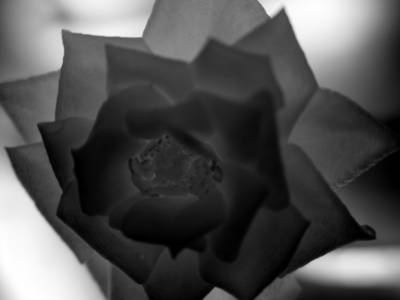Saturday, July 03, 2004
Infrared basics for digital photographers
Here is another web site called Infrared basics for digital photographers. This will explain in more detail how to photograph in Infrared
Sunday, June 27, 2004
Can you see in Infrared?
The text books say no, that the visual spectrum is between 700nm and 400nm, and that the infrared wavelength is from 700nm and above. I accepted this until I was looking through the Infrared filter I've been using to take my Infrared pictures with using a paper tube to block out the white light. The IR filter is very dark, but after a few minutes my eyes adjusted and I could see through it. The trees and shrubs looked white just like the pictures I have taken. This got me thinking. Why was I able to see through the filter if you can't see in the Infrared spectrum? I figured the answer was that the filter let some of the visible spectrum through as well. To test this theory, I used my spectrometer I bought from Edmund Scientific, held the IR filter in front of the slit aperture and found I had to point it at the sun to get enough light through to see anything, and to my surprise, I saw a dark red band from 700nm fading at around 800nm. No "Visible" light could be seen from 700nm and lower, so the IR filter was doing it's job. From this experiment the answer seems to be "yes" you can see IR and "no" you can't. When I look through the spectrometer at sunlight reflected off a white card (you can't look directly at the sun with the spectrometer because it's too bright) all I see is the visible spectrum everyone else sees. Remember, I had to point the spectrometer at the sun to get enough light through the IR filter so I could see something, and from this I gathered that "yes" you can see IR, but your eyes are not that sensitive to it as it is to the visible spectrum, just like your digital camera is. And just like the digital camera, I had to force enough light through to see something. This is why exposures are so long (around 15 seconds) unless you use the "night shot mode" which removes the IR blocking filter in the camera.
There is the possibility I could be wrong, after all I didn't get a grant from the government to buy the proper equipment to do a study, but I would love to hear from someone who could test this theory.
There is the possibility I could be wrong, after all I didn't get a grant from the government to buy the proper equipment to do a study, but I would love to hear from someone who could test this theory.
Saturday, June 26, 2004
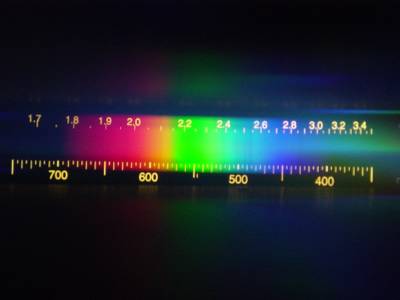
This is a spectrograph of the sun. The human eye is capable of seeing between 700nm and 400nm. So heres the question. If the digital camera is capable of seeing in the infrared spectrum which is above 700 then why didn't the camera capture anything above 700. The reason is most cameras have an infrared blocking filter that makes the camera less sensitive to infrared light. Since the camera made an exposure based on the visible spectrum it didn't record the IR because it isn't as bright. When you put on the Infrared filter all other light is blocked so it makes a longer exposure to capture the infrared.
Posted by Hello
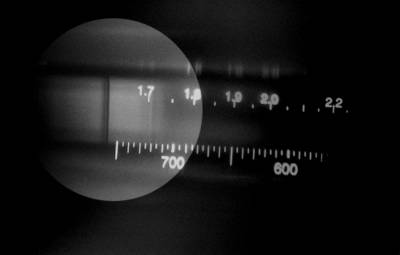
The infrared spectrum is above 700nm. The Infrared filter blocks all the light below 700nm. This photo was taken with my spectrometer and the camera was in the night shot mode. It wasn't designed to have a camera mounted to it so it was a little difficult to get this shot, but you can see the infrared wavelengths with a Fraunhofer Absobtion line around 800nm. These lines show up when something blocks a particular wavelength (probably the California smog)
Posted by Hello
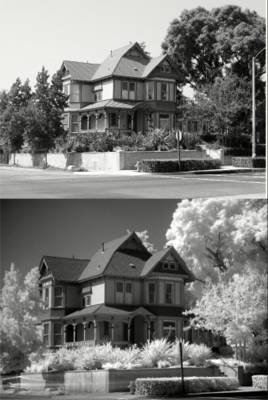
This is a photograph of the same house. The top photo is a normal B&W Photo, and the bottom was photographed with an Infrared filter
Posted by Hello
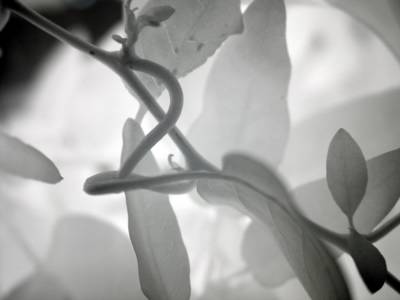
Photo of vine in the "Night Shot" infrared mode using Hoya R72 filter. In the mode the exposure is short. You may also want to cover the two small Infrared emitting diodes with some black tape.
Posted by Hello
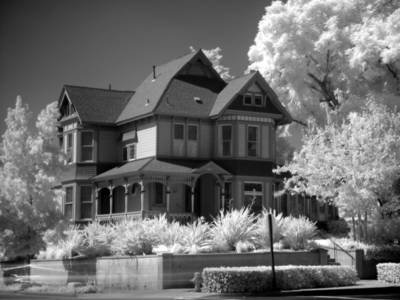
Victorian style house in Claremont California taken in Black and White mode with long exposure. Note how white the leaves are on the trees and plants
Posted by Hello
What subject will make the best Infrared photo?
Most vegetation will appear white, for instance, a tree will have a dark trunk and limbs but the leaves will be snow white. The sky will be almost black against white clouds. Skin will appear alabaster without wrinkles or blemishes.
IR photographs with digital cameras
Most digital cameras are sensitive to the near Infrared spectrum, and some cameras like the Sony DSC-F707 will take pictures in complete darkness by using an Infrared Light Emitting Diode. You can use your cameras ability to see in the Infrared Spectrum and take some nifty photos with the edition of an Infrared filter. The filter you need is R72 by Hoya or equivalent filter by another company. The Infrared filter is almost completely opaque, but to the digital camera it looks almost clear.
Another feature your camera should have is the ability to take Black and White photos. If you try and take pictures in the color mode the photos will come out looking magenta or some other shade of red which you will have to manipulate in a photo editing program to change it to black and white.
One of the reasons for choosing the Sony DSC-F707 digital camera was the ability to use screw on filters. Most digital cameras require an adapter to use filters because the camera was designed for the "point-and-shoot" market. The Minolta's high end digital camera will also accept filters, as will all of the digital cameras with interchangable lenses.
Another feature your camera should have is the ability to take Black and White photos. If you try and take pictures in the color mode the photos will come out looking magenta or some other shade of red which you will have to manipulate in a photo editing program to change it to black and white.
One of the reasons for choosing the Sony DSC-F707 digital camera was the ability to use screw on filters. Most digital cameras require an adapter to use filters because the camera was designed for the "point-and-shoot" market. The Minolta's high end digital camera will also accept filters, as will all of the digital cameras with interchangable lenses.
Subscribe to:
Posts (Atom)








